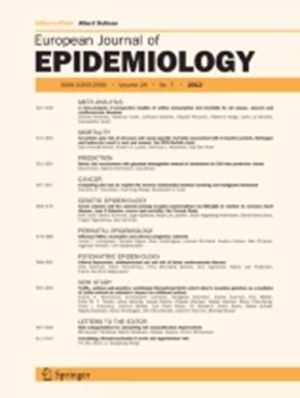自闭症“流行”:误解、错误信息和阴谋。
IF 5.9
1区 医学
Q1 PUBLIC, ENVIRONMENTAL & OCCUPATIONAL HEALTH
引用次数: 0
摘要
美国卫生与公众服务部(HHSS)部长最近声称,美国对自闭症患病率的估计证实了自闭症流行病的存在。此外,HHSS断言,自闭症的流行是由一种环境毒素驱动的,他承诺在接下来的几个月里找到这种毒素。这些说法与研究相矛盾,研究表明,对自闭症的理解、检测、诊断和管理方面的进步助长了患病率的上升。HHSS的声明也与科学家的观点形成鲜明对比,这些科学家一直在监测美国和世界范围内自闭症患病率的上升趋势。在这篇评论中,我们依次解决了HHSS提供的每个误解和误解。我们表明,自闭症的定义、诊断标准和做法的变化、调查中的病例确定、纳入不太严重的自闭症形式以及其他背景因素,如提高认识、消除污名化、宣传、改善获得服务的机会和更好的保险覆盖面等,都导致了自闭症发病率的增加,将自闭症发病率的上升描述为流行病是一种误导。此外,考虑到自闭症的强遗传性、遗传和表型异质性以及环境风险方面的线索缺乏,在接下来的几个月里找到与自闭症有因果关系的环境毒素的承诺似乎是荒谬的。我们警告说,当经验数据被忽视,科学方法被驳回,专家意见被蔑视时,关于自闭症病因的错误理论和已经被揭穿的假设就会卷土重来。本文章由计算机程序翻译,如有差异,请以英文原文为准。
The autism 'epidemic': misinterpretation, misinformation and conspiracy.
The Secretary of the US Department of Health & Human Services (HHSS) recently claimed that US estimates of the prevalence of autism confirmed the existence of an autism epidemic. Furthermore, HHSS asserted that the autism epidemic was driven by an environmental toxin which he promised to find in the following months. These claims are contradicted by studies showing that progress in the understanding, detection, diagnosis and management of autism have fueled the increasing prevalence. HHSS statements are also in sharp contrast with the opinion of scientists who have monitored the upward trend in autism prevalence in the US and worldwide. In this Commentary, we address sequentially each misconception and misinterpretation proffered by HHSS. We show that changes in the definition of autism, in diagnostic criteria and practices, in case ascertainment in surveys, the inclusion of less severe forms of autism and other contextual factors such as improved awareness, de-stigmatization, advocacy, improved access to service and better insurance coverage have all converged in increasing the prevalence of autism and that presenting the rise on autism prevalence as an epidemic is misleading. Furthermore, given the strong heritability of autism, its genetic and phenotypic heterogeneity and the paucity of leads on environmental risk, the promise to find an environmental toxin causally related to autism in upcoming months appears at best preposterous. We warn about the return of false theories and already debunked hypotheses on the etiology of autism when empirical data are ignored, scientific methodology is dismissed and experts' opinions disdained.
求助全文
通过发布文献求助,成功后即可免费获取论文全文。
去求助
来源期刊

European Journal of Epidemiology
医学-公共卫生、环境卫生与职业卫生
CiteScore
21.40
自引率
1.50%
发文量
109
审稿时长
6-12 weeks
期刊介绍:
The European Journal of Epidemiology, established in 1985, is a peer-reviewed publication that provides a platform for discussions on epidemiology in its broadest sense. It covers various aspects of epidemiologic research and statistical methods. The journal facilitates communication between researchers, educators, and practitioners in epidemiology, including those in clinical and community medicine. Contributions from diverse fields such as public health, preventive medicine, clinical medicine, health economics, and computational biology and data science, in relation to health and disease, are encouraged. While accepting submissions from all over the world, the journal particularly emphasizes European topics relevant to epidemiology. The published articles consist of empirical research findings, developments in methodology, and opinion pieces.
 求助内容:
求助内容: 应助结果提醒方式:
应助结果提醒方式:


